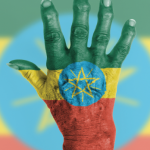Online courses and skills that can be gained in telehealth programs are important education delivery methods in Africa.
Focus on the U.S.
The need for more rheumatologists and the impact of COVID-19 on the workforce in the U.S. were among the topics addressed by Dr. Battafarano. He quoted the 2015 ACR workforce study, which projects a need for about 1.6 rheumatologists per 100,000 adult patients although the needs for pediatric rheumatology are less certain.
“In order to meet the future demand, without any interventions, a 100% increase in the number of rheumatologists would be needed to meet the U.S. demand for rheumatology services by 2030,” said Dr. Battafarano.
There have been dramatic shifts in the rheumatology workforce since 2015 due to baby boomer retirements, a female predominance, millennials and an increase in part-time rheumatologists since COVID-19. “Steps to retain senior rheumatologists in the workforce in various capacities could help alleviate the effects of these losses,” said Dr. Battafarano.
Lifestyle and work expectations of millennial rheumatologists also affect the workforce needs, as do the aging population in the U.S. Even though new training programs have opened, the U.S. cannot train enough rheumatologists. Despite a 100% fill rate for adult rheumatology programs, over 100 applicants per year are turned away. In contrast, many training spots in pediatric rheumatology go unfilled, largely because of a three-year fellowship and poor remuneration.
Several initiatives have been developed and include opening new fellowship programs in underserved areas. Virtual lectures for adult and pediatric grand rounds are now available for primary care programs, as well as a website, to assist primary care providers assessing rheumatic symptoms, interpret laboratory tests and reference medications. Virtual training in telehealth and training grants for nurse practitioners and physician assistants in rheumatology are available. A pilot program to look at creating a rheumatology network with primary care providers is also underway.
Focus on Latin America
As in many regions of the world, there are major differences in the availability of rheumatology services in Latin America. Dr. Arredondo noted the majority of rheumatologists in Latin America are in the southern countries of Brazil, Uruguay, Argentina and Chile, with fewer providers in absolute numbers or per population in countries like Nicaragua, Honduras and El Salvador.
Among the barriers to workforce development are the costs of fellowship, which are often borne by trainees, and the lack of training positions in some countries. For example, in Nicaragua, El Salvador or Ecuador, where there are no rheumatology programs, the problem seems to be that residency positions are controlled by governments that do not see the need or importance of opening rheumatology programs in their countries to train physicians in their local universities, so all rheumatology specialists must study abroad.


